It’s time once more to take a semi-data-driven look back at my 10 favorite songs of the year just ended. (I have previously conducted this empirical/subjective exercise for 2007, 2008, 2009, and 2010.) I’m posting this on Murketing.com, which is technically a dormant site, because this is the easiest place for me to take advantage of useful plug-ins. I’m “hiding” (sort of) this post by giving it a fake post date — the real post date is January 8, 2011.
Here’s the top ten. Number-crunching and analysis follows.
[table id=7 /]
As always:
- I start out by seeing which songs I played most often, per iTunes data.
- Then I cross-match that information with my one-out-of-five-stars ratings, and tweak accordingly.
- Then I sometimes tweak a little more.
This was a weird year for me, music-wise. I still haven’t gotten around to buying a lot of the 2011 releases I still intend to buy. Partly I’ve been busy, partly I’ve been on a budget, and partly there’s so much interesting music around that’s released free-and-legal, I haven’t really found myself sitting around craving new sounds as much as usual. (But that may be because of the “I’ve been busy” factor just noted.)
Also: I don’t track this data (I wish I could), but I’m quite certain I spent more time in 2011 listening to podcasts than in years past — including music podcasts. I also suspect I listened to more Internet radio and streams than usual: Pandora, KCRW, Give The Drummer Some (the show and the stream), Rock ‘n’ Soul Ichiban (another WFMU stream), WWOZ, and WBGO, to name some examples. (What about Spotify? I’ve used it a little, but honestly not much. And I never did get around to exploring Turntable.fm.)
But since this is supposed to be a data-driven exercise, let’s look at the numbers. Last year I added to my iTunes library 262 songs that were released in 2011 (as opposed to older songs that are “new to me,” as they say). The comparable number in 2010 was 350; in 2008 it was 377; in 2007 it was 325. So it does seem my 2011 inventory is a bit light. (I added 779 songs overall to my iTunes library in 2011, meaning that as usual “new” music was in the minority — but this number is also generally low by past standards, again suggesting an overall trend, for the year at least, away from adding to the library at all, for whatever reason(s).)
So let’s look at the Top Ten.
- The most obvious thing to address is Adele. Given that Adele’s record was far and away the mainstream success story of 2011, I’m predictably sheepish about a list that announces, “Hey, I like the popular thing, too!” But the facts are what they are. That’s sort of the point of this entire exercise, isn’t it? The background is that I was quite interested in hearing the new Adele release as soon as it was available, basically because I liked her earlier song “Cold Shoulder.” When I listened to the snippets of 21 on iTunes, I liked three songs. The rest struck me as kind of bland. So I just went with the three I liked, and it turned out I really liked them, evidently. One, “Rolling In The Deep,” later became a massive sensation. I think “Rumor Has It” has also had a pop life, but I’m not sure whether “I’ll Be Waiting” was ever promoted as a single or not. I am aware that one of the bland songs became a hit, and I hear it from time to time, but the fact that I don’t recall its name suggests that my opinion about it hasn’t changed.
- Meanwhile, you might wonder what the exponentially less-familiar Kubik is doing near the top of the chart. Here’s the deal. For some time now I’ve been a devotee of the Popcop Music Alliance Pact: Basically this music blogger gets a bunch of other music bloggers from around the world to recommend and offer up one notable single each, in a monthly exercise. I always download the entire ZIP file of 36 tracks. Generally, most of it is not my kind of thing, and gets deleted immediately. Yet almost every month there are a few keepers, and sometimes a song or two that’s not just a keeper, but a killer. It’s stuff I’d be unlikely to hear otherwise (although every so often one of these artists eventually breaks through in some more traditional way) but I also enjoy the process: I like that I have to wade through a bunch of junk to find the gems. It’s kind of like listening to the radio! Anyway, Kupik is from Portugal. The data suggests that I quite enjoy “Shina-Kak,” and I agree with that suggestion. It’s from the June 2011 installment of the Pop Cop Music Alliance Pact.
- I know I’ve mentioned the Music Alliance Pact in the past, and I might even have included a song from it in a prior year’s top ten. But this year there are two. The second is “You’re Gonna Hate Me,” by a Greek band called Victim of Society. It’s from July.
- Not only that, but three more tracks found via this same Pop Cop project were under data-driven consideration for this year’s top ten. “Hey Kidz,” by Swiss band Cryptonites (from March), got 15 plays; “White Walls Painted Black,” by another Greek band, Plastic Flowers (from August), got 14 plays; and “A Boy And The Birds,” by Your Hand In Mine, yet another band from Greece (from September), got 12.
- Brian Eno’s “Glitch” was put above these on my top ten because of its five-star rating. Also, I really enjoyed pretty much everything on the record Drums Between The Bells.
- I also gave five stars to “Dedication to My Ex,” by Lloyd. With only eight plays, this requires a quick explanation. I actually became familiar with this song rather late in 2011 from an actual terrestrial radio station, heard on my strictly analog car stereo. It made an impression on me and I looked it up via the lyrics when I got home. I discovered that what I’d heard is the clean version of a song earlier whose “real” version is so soaked in sophomoric profanity that I’m embarrassed to listen to it. So I ended up buying the “clean” version! I am an old man! Get off my lawn! Whatever. I resolutely insist that this version is far superior, and a really top-notch pop tune.
- The decisions leading to the last three songs rounding out the top ten are a bit subjective. Some others got more plays, and equally high ratings. (Notably, I actually played Frank Ocean’s “Swim Good” 14 times, but I am more interested in hearing “Lovecrimes” again right now, so there you have it.)
- Three tunes found via Disquiet also merit mention here: “Meditation,” by Hypoetical, got 15 plays; “Before Pale,” by Joshua Treble got 13, and “Fennel,” by Y?Arcka, got 10, despite being added late in the year.
- Also high-ish on the playcount list: “Bedroom Eyes” from Dum Dum Girls, which I obtained via Huh, had 13 plays; and Peter Bjorn & John’s cover of “Is This It,” from the Strokes tribute collection put together by Stereogum, got 11.
In the past I’ve done some additional analysis based on LastFM data, but there was some kind of glitch between me and LastFM this year, and basically I consider all my data over there totally useless for now. In recent months the glitch seems to have resolved itself, so it’s possible LastFM data will be useful for 2012 — but sadly its utility as a tool for assessing longer-term trends is now completely suspect.
A final note: This is the fifth time I’ve done this. I think now perhaps enough time has gone by to consider a serious re-assessment of past lists: How will my best of 2007 hold up in 2012? I don’t really intend to think about that overtly in the year ahead, but I think it will be something worth visiting when the year is done. Unless that Mayan end-of-the-world thing is true, in which case I guess this will have marked my final entry in this series…
Happy New Year!
[ADDENDUM JUNE 2011: In addition to my new Times Mag arrangement noted below, I’m now contributing to Design Observer, and thus Murketing.com is now defunct. Please find me over there.]
Flattered as I was by Book of Joe’s recent suggestion that the NYT Mag jack up my fee for Consumed, I knew something different was underway: This Sunday’s column (here) is in fact the finale of Consumed’s six-year run in the magazine.
I’ll remain a contributing writer, doing more features instead. Having written 300+ Consumeds, I’ve toyed with a change like this, and I’m happy with my new arrangement. BUT, I am of course sad to lose this regular venue and its great audience.
I’ll maintain the Consumed Facebook page, since I still care about the subjects I wrote about in the column, and value conversations that result from the stuff I post there. I plan to keep writing about Consumed-y stuff in a Consumed-y way, whether published by someone else (entertaining possibilities now) or by me (but on more of a monthly schedule). If you’re interested in hearing (or influencing) whatever else comes next, sign up for the new Consumed/Rob Walker mailing list below.
Now, obviously, I’m not going to bullshit you by suggesting that this specific handling of things was my idea. If you’re a media-gossip junkie, you may know that the whole front of the book of the Times Mag is being revamped. But I’m a longtime fan of the Times Magazine‘s new editor, and genuinely excited about the stuff he wants me to do. Plus the new editor handling the new front of the book seems really smart, and as a reader I totally look forward to seeing what he comes up with. It’ll be a few weeks, I gather, before the new version debuts, but once I had a sense of my new role, I decided to go ahead and shift to the next thing sooner rather than later. (That bit really was my idea.)
Anyway, my sincere gratitude to all who have followed & enjoyed & contributed ideas to & and said nice things about the column over the years. If you’re interested in what’s next, sign up to the email list (and please spread the word about said list) and I’ll keep you posted. Thank you!
Feb 13 Update: Bonus! Friend of Consumed Molly sends this, which she says is the QR Code for the column’s last NYT installment:
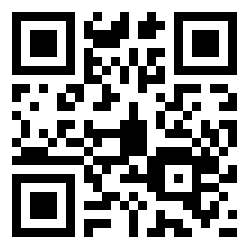 (And if you don’t know what a QR code is, well, of course it’s something I wrote about in Consumed.)
(And if you don’t know what a QR code is, well, of course it’s something I wrote about in Consumed.)
Posted Under:
Uncategorized
This post was written by Rob Walker on February 11, 2011
Comments Off on This weekend’s Consumed in the NYT Mag — is the last!

Who is this man? Where is he going?
He walks with purpose. There is something in his hand, and it probably has import. He moves, I believe, toward a place, not away from, let’s say, an idea.
He is in no hurry, yet he seems sure of his direction, his goal.
Will he ever arrive?
No. I’m sorry to say he will not.
Recently I had the pleasure of giving a brief talk about the Hypothetical Development Organization at the excellent Grand Arts, in Kansas City. In preparing for that, I was doing a lot of research to try and figure out how I want to define “architecture fiction,” and along the way I started collecting possible examples involving “augmented reality.” Whether these examples really count or not (beside the point for the moment), I wanted to collect my thoughts on that particular diversion somewhere.
Thus this post.
I wrote about augmented reality in Consumed back in November 2009, but most of the examples that I could find at the time didn’t really interest me that much. (Basically augmented reality refers to data overlaid on what you see when you peer at the world through your cell phone – Yelp reviews floating in front of a restaurant, that sort of thing.)
But looking around again more recently I found more stuff that I found at least potentially interesting. Each of the following examples strikes me as compelling on some level, and maybe hinting at interesting things that might be done in connection with, oh, I don’t know, something like Hypothetical Developments. I welcome other examples or reactions, naturally.

First up: Irene Cheng and Brett Snyder created an app called Museum of the Phantom City. In this case, the user gets information about proposed utopian projects in New York City that never came to pass.

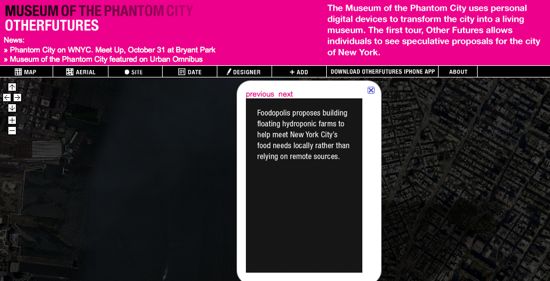
Unbeige explained: “Using GPS, you can use the app to wander around the streets of NY and absorb a little history about what never was as you come to it, along with some interactive bits surrounding these invisible sights.”
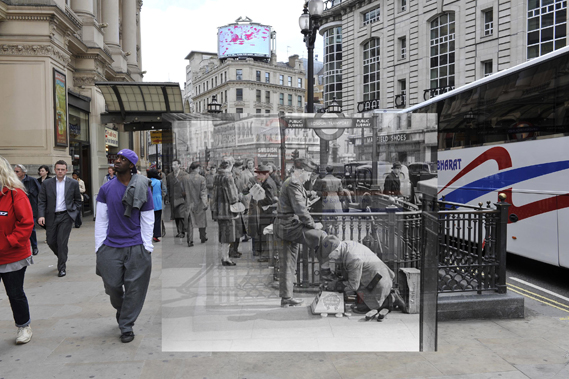
Next: The Streetmuseum app, which adds historical information and images to geographic locations. I believe it is London-specific at this point. (I doubt that the above example is how it really looks when you actually use the app.) Bruce Sterling is a fan.
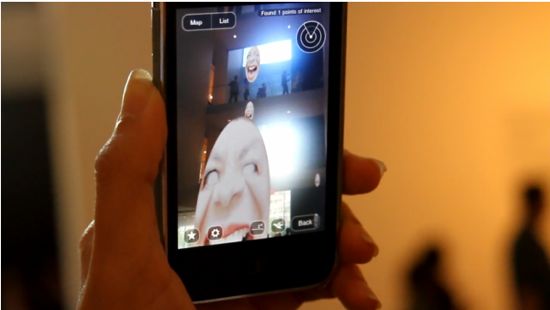
The above, Tamiko Thiel’s “Art Critic Matrix,” was part of a show called “We AR in MOMA,” which used the Layar augmented reality browser. Basically this was a show set geographically (and without permission, for what it’s worth) inside MoMA, but that could only be seen through a smartphone.
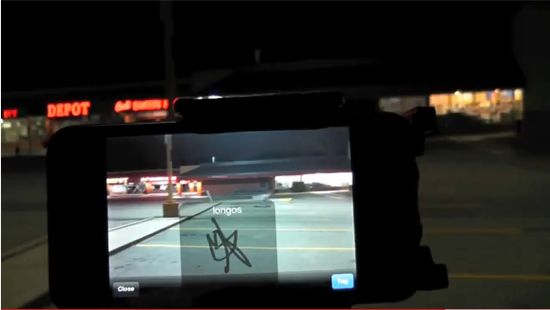
Finally, this is something called ARStreets, characterized as a “location-based game” for the iPhone. Basically you can add a graffiti-style “tag” to a place, visible only to other users of this app. I’m not really crazy about this, but it seems to count as an example of … whatever the hell I’m talking about.
What I’m trying to figure out is whether we can do something like for this Hypothetical Development: If someone who visited one of our sites could see, on their smartphone, our rendering of that building’s Hypothetical future, and read our description. Seems like this would be do-able, no?
I saw this thing interviewing “successful people” who are “doing exactly what they want.”
I’m skeptical. Maybe these people aren’t doing anything they don’t want to do (or doing as little of it as possible, more likely). But I bet every single one of them would think of new things they “want to do” if someone forked over a billion dollars tomorrow.
In fact I bet they all have lists of things they want to do but haven’t been able to, for one reason or another. (Lack of an extra billion dollars, for instance.)
This phrase “doing exactly what you want” is very appealing to headline writers for obvious reasons. And yet if you really think about it, it’s sort of depressing. If you’re doing exactly what you want, then what will you do next? What aspirations are going to get you out of bed in the morning? What, in other words, do you have to look forward to?
Posted Under:
Uncategorized
This post was written by Rob Walker on October 5, 2010
Comments Off on Support the hypothetical

You may have seen this elsewhere online, since it’s been making the rounds, but PSFK (friends of Murketing, I should mention) recently put out a rather massive report full of ideas relating to the future of health care. It takes me days to get through documents like this — more than 200 pages of ideas and concepts, from PSFK itself as well as a battery of agencies they asked to contribute. But I’m always happy to see the various smart people in the trend/marketing/design worlds putting the minds to a problem bigger than, you know, how to sell more stuff. And I have a particular interest in health care being improved by technology and design and so on, both here in the U.S., and in the world’s underdeveloped regions where the problems remain shockingly acute.
One of the dominant problems in both scenarios, I think it’s safe to say, is communication with professionals, so I was pleased to see that listed near the top of the “Challenges” list: “Limited ability to contact physicians and health workers when necessary.” Lots of proposed improvements on that front involve the marriage of mobile technology with the Internet.
The report names ten challenges in all, and the concepts range from self-monitoring ideas to practical design suggestions. Check out the whole thing here. PSFK has also been doling out highlights on its site.

Body Language - Weiden + Kennedy NY
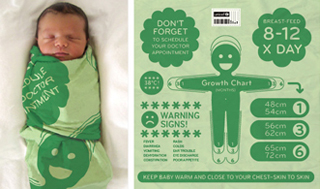
Information Blanket - BMB

CHW Radio Network - Story Worldwide
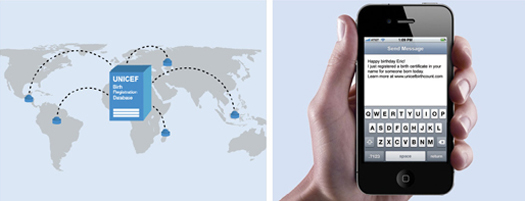
UNICEF SMS - Great Works
Posted Under:
Uncategorized
This post was written by Rob Walker on August 6, 2010
Comments Off on PSFK’s Future of Health Report
Finally announced, here.
Posted Under:
Uncategorized
This post was written by Rob Walker on June 9, 2010
Comments Off on Significant Objects: The book
Would you pay for an anonymous creation? Weigh in on this post over at Significant Objects, asking some questions about Anonymous Art, Mystery Objects, and Unknown Authors.
In other Significant Objects news, W+K proposes a retail concept “inspired by Significant Objects.” We look forward to the royalties!
Good weekend, all….
Posted Under:
Uncategorized
This post was written by Rob Walker on June 4, 2010
Comments Off on Elsewhere: Anonymous Authors
On Hypebeast, this from a post titled Sagmeister x Levi’s 501 Art Installation for American Rag. This post part of an occasional series.
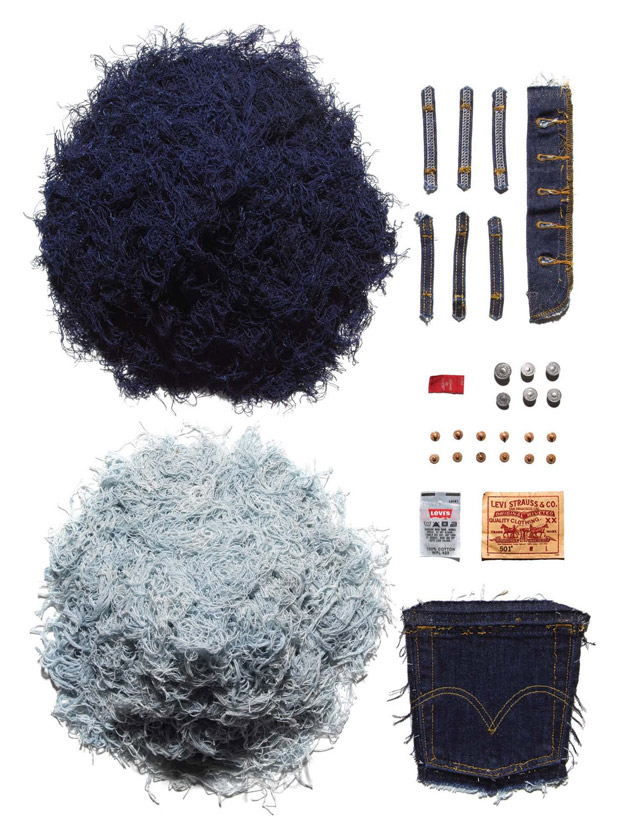
Click for more.
Posted Under:
Uncategorized
This post was written by Rob Walker on May 24, 2010
Comments Off on Pictures of Stuff, Cont’d: Jean components
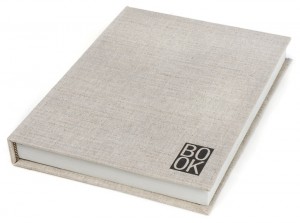 This was commented earlier, but here is BOOK.
This was commented earlier, but here is BOOK.
Designed by two Minnesotan bibliophiles, BOOK began as a project to produce artist’s monographs. After designing and constructing our first book, we realized that the book jacket is a time-tested method of protection applicable to other materials beyond pages. While we believe that that BOOK is a great companion for digital devices, we also believe in the power of paper books. A portion of the profits from BOOK will be used toward producing artists’ books at Location Books.
The upshot is something that makes your e-reader look like a real book — albeit not a specific book, but just, well, the idea of a book.
 In a sense the Kindle version is a higher-end take on Busted Typewriter’s revision of books into device-holders. (You will recall the Buying In iteration.) What I’m more curious about is the iPad version. The iPad strikes me as a display device — people who buy these want to wave them around and accrue status via their prize possession, don’t they? But maybe that’s not fair. Perhaps there is a segment of the iPad early adopter public that is sheepish-to-modest about the gadget, and prefers to keep it on the low? If so, here is the $89 solution.
In a sense the Kindle version is a higher-end take on Busted Typewriter’s revision of books into device-holders. (You will recall the Buying In iteration.) What I’m more curious about is the iPad version. The iPad strikes me as a display device — people who buy these want to wave them around and accrue status via their prize possession, don’t they? But maybe that’s not fair. Perhaps there is a segment of the iPad early adopter public that is sheepish-to-modest about the gadget, and prefers to keep it on the low? If so, here is the $89 solution.
Posted Under:
Uncategorized
This post was written by Rob Walker on April 22, 2010
Comments Off on Books, the idea, cont’d: Disguising your Kindle .. or iPad?
Every year right about this time I remind people: Please contribute photos taken on MLK Boulevards, Drives, Streets, Avenues, etc., anywhere, to the MLK BLVD Flickr pool, an open-source photojournalism project. Highlights appear on the blog MLK BLVD. The image above, from an MLK parade on MLK in New Orleans.
[For the three of you who read the No Notes blog: This is a cross-post.]
Posted Under:
Uncategorized
This post was written by Rob Walker on January 18, 2010
Comments Off on MLK BLVD
This won’t make sense unless you are/were at my chat in Minneapolis, but this is the easiest way for me to do this, so just ignore if you don’t have any idea what I’m referring to.
If you do know what I’m referring to, here are the promised links:
- Harriete Estel Berman’s site; Murketing Q&A with her.
- BustedTypewriter’s Etsy Shop, where a gutted copy of Buying In was sold, is here.
- Rubi McGrory’s site.
Was there other stuff I should link to? If so, let me know in the comments and I will.
Thanks to ACC and to everyone there; it was fun.
After I spoke, a bunch of people clustered around with questions. I did my best, but it never works well when 20 people want to have a real one-on-one. Sorry for those I disappointed.
That said, one guy waited through all of it, and I finally said, “Yes?” And he said:
“Thanks. Just wanted to say thanks.”
That was it. No pitch, no business card, didn’t want a thing. Just went on his way after saying those few words.
I don’t know who that guy was, but he really made my night.
So if that guy is out there reading this:
Thanks.
Posted Under:
Uncategorized
This post was written by Rob Walker on June 28, 2009
Comments Off on Final note about How Conference
… and happened to attend my talk there.
These are links are follow-ups to various things mentioned, if you want more information or context:
Here’s my column on counterfunctionality, describing Jonah Berger’s work. Here is the spinoff counterfunctionality Tumblr where I’ve lately been compiling watch examples. Here is Jennifer Perkins’ DIY counterfunctional watch project.
Here’s a column partly about consumer attraction to both the novel, and the familiar.
Here’s a column on “venturesome consumption” (and iPhone apps; here’s something on that student-art app).
Here’s a column on “immaterialism” (Facebook gifts and other forms of digital/virtual goods).
Here is the site of F2 Design (letterpress); here are the sites of the other two creators I also hired to make posters for Buying In: Amy Jo, and The Little Friends of Printmaking.
Here is The Kings of Leon’s sprawling merch selection; here’s the site of Barking Irons, whose work with Kings Of Leon I mentioned. Here’s a Murketing post about the Of Montreal lifestyle-products record release; here is a post about the band selling a hunting knife.
Plutonomics discussed here.
Here is more about the Kyoto Box. Here is more about the work of the Center for Vision in the Developing World, including the “self refraction” optics method. Here is more about Pielab, in Greensboro, Alabama. The M-Lab person I mentioned is Brian W. Jones, who is also a collaborator with me and others in the Unconsumption blog (which, actually, I didn’t mention, but maybe I should have).
And yes, I read the tweets after these things. Most amusing one here. (You had to be there.) Most comprehensive tweeting of the How conference by Debbie Millman.
If you enjoyed the talk, you might enjoy Consumed (and its FB page) and/or Buying In: The Secret Dialogue Between What We Buy and Who We Are.
If you did not enjoy the talk, I am sorry.
And if there’s something else I should add to these links, tell me in the comments. Thanks.




 "
"
 (And if you don’t know what a QR code is, well, of course it’s something I
(And if you don’t know what a QR code is, well, of course it’s something I 



























 Kim Fellner's book
Kim Fellner's book  A
A